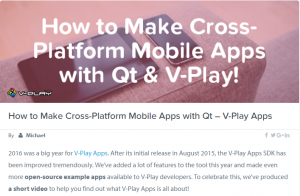Near the end of 2017, Med Device Online published an article outlining important medical device design and manufacturing challenges at present and would extend into 2018 and beyond.
Working with Qt, and developing on the innovative, safe, and effective Qt software framework, we help companies meet and overcome these challenges medical device developers and manufacturers face. The following is a list of the challenges outlined in the Med Device Online article and the Qt response:
- Beating the Competition with Innovation
You can create modern User Experiences with uncompromising performance & reliability. Build safe, effective, and reliable user interfaces and user experiences on almost any embedded device or mobile device platform. - Anticipating Rising Costs & Regulatory Changes
The Qt Company has a very experienced and diverse partner ecosystem. Leveraging our partnership with The Emergo Group allows our customers to better understand and anticipate the effects of pending regulations. Through this partnership our customers can best align their product development cycle with the regulatory certification cycle, making their overall go-to-market process (development + regulatory) faster and more efficient. - Streamlining R&D Amid Shorter Product Life Cycles
During a recent customer survey, 84% of Qt’s customers state that their development teams are more productive using Qt. When asked how much productivity increased, their response was that productivity went up nearly 100%, or doubled, what it did when they weren’t using Qt. Qt allows you to do more work with less people in shorter amounts of time. If your software is intended to live on different types of platforms, you will not need a separate software development team for each platform with which it is to be compatible. The User Interfaces and User experiences created on Qt can reside on mostly any embedded or mobile platform with one code base. Simply code and compile to iOS, MacOS, Windows, Android, Embedded Linux, QNX, and many others. - A Need For Growing Support Networks
The Qt Company has a very experienced consultancy group and that can help streamline R&D processes and uncover new, “outside the box” opportunities to compete on innovation. Our Qt consultants combined with our industry leading partnerships help our partners streamline time-to-market while enhancing safety and effectiveness.
We at The Qt Company are happy to help companies to design safe, efficient and user-friendly medical devices. Read more about our offering for the medical industry at www.qt.io/qt-in-medical.
The post Medical Device Design & Manufacturing Challenges: 2017 And Beyond appeared first on …read more
Source:: http://blog.qt.io/blog/2018/01/31/medical-device-design-manufacturing-challenges-2017-and-beyond/







